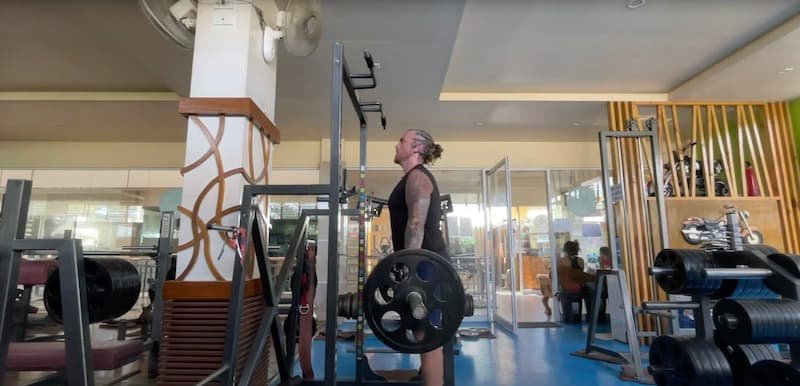
 Nick Pelios
Freediver, Creator
Nick Pelios
Freediver, Creator

 Nick Pelios
Freediver, Creator
Nick Pelios
Freediver, Creator
Freediving requires not just skill and technique but also a solid foundation of physical strength. In a recent video, Brad James, an experienced freediving instructor and competitive freediver, shared his insights on building strength specifically for freediving. Here’s a breakdown of his recommended approach to strength training that can enhance your performance and reduce fatigue during deep dives.
Whether you're new to freediving or an experienced diver struggling with fatigue at deeper depths, developing strength is crucial. Stronger muscles can endure more stress and fatigue less quickly, which is essential when pushing the limits of your dives.
Brad’s program focuses on compound movements that target multiple muscle groups simultaneously. This approach builds overall strength efficiently and effectively. Here’s a step-by-step guide to his recommended strength training routine:
Program Structure
- Frequency: Train three times a week (e.g., Monday, Wednesday, Friday) with at least one rest day between sessions.
- Duration: Each workout session should last between 30 minutes to an hour.
- Rest Between Sets: Start with 1.5 minutes of rest between sets, increasing to up to 3 minutes as the weights get heavier.

The core of Brad’s program involves performing five sets of five repetitions for each exercise. The goal is to progressively increase each session's weight, provided you complete all sets with proper technique.
Workout A
1. Squats: Start with light weight to perfect your form. Squats are crucial for building leg strength.
2. Bench Press: Focuses on the chest. Start light to develop technique and avoid injuries.
3. Barbell Rows: Targets the back, complementing the bench press to balance upper body strength.
Workout B
1. Squats: As with Workout A, continue to build leg strength.
2. Shoulder Press: A challenging exercise that works the shoulders. Perform this outside a cage if needed, but be cautious of safety.
3. Deadlifts: Start with one set of five reps. Increase the weight progressively. Deadlifts help build overall body strength but can be intense.

Weight Increase: Add 2.5 kg to each exercise each session if you complete all sets successfully. If you fail a set, repeat with the same weight until you succeed. If you fail three times in a row, reduce the weight by 10% and build up again.
Technique Overload: Start light to perfect your technique and avoid injury. Proper form is essential for effective strength-building and injury prevention.
Avoiding Muscle Soreness: Gradual weight increases help prevent delayed onset muscle soreness (DOMS), ensuring you can stick to your workout schedule without interruption.
Brad suggests aligning your workouts with your freediving schedule. If you dive frequently, consider scheduling your strength training sessions on days when you’re not diving or after diving sessions to avoid overexertion. This strength training program is designed to build fundamental strength for freediving, enhancing your performance and endurance. By focusing on compound movements, maintaining proper technique, and progressively increasing weight, you can develop the strength needed to excel in your freediving pursuits. This routine not only improves overall strength but also helps mitigate fatigue, making your dives smoother and more enjoyable. For those new to strength training or looking to integrate it into their freediving routine, Brad’s approach offers a straightforward and effective method to get started.